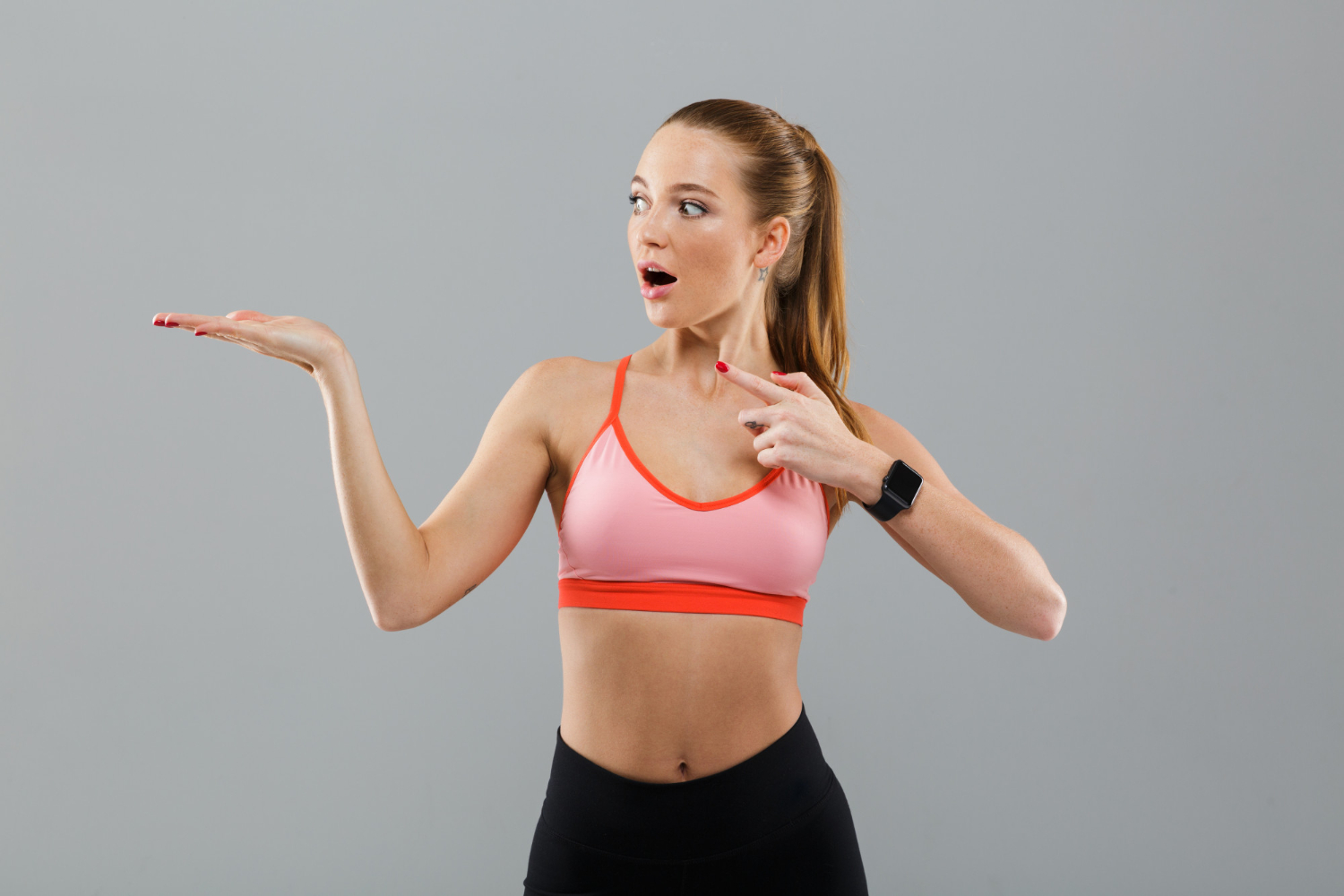Looking strong and confident in front of the camera is key when working in the fitness modeling world. This niche demands more than just a good physique; it requires a deep understanding of how to show that physique off in a flattering, powerful way. In this article, I’ll dive into the most valuable posing secrets for fitness models, based on both personal experience and what’s expected in the industry.
Knowing Your Body’s Strengths
Fitness modeling is all about showcasing strength, muscle tone, symmetry, and athleticism. Before even stepping in front of the camera, I make it a point to analyze my body in the mirror. I study how the light hits different muscle groups, how certain angles make my arms, abs, or legs appear more sculpted, and which postures feel the most natural yet powerful.
It’s not about flexing as hard as possible, it’s about smart posing that brings attention to the right areas. I learned quickly that subtlety can sometimes be more effective than full-on flexing.
Practicing in Front of the Mirror
One of the best ways to master posing secrets for fitness models is consistent practice. I’ll take 10–15 minutes each day to pose in front of the mirror. I test arm positions, stances, and how my core appears when I adjust posture just slightly.
What surprised me most is how much posing is about breath control. Exhaling during a pose tightens my core and creates that visual pop in the abdominal area. That extra second of breath control can be the difference between a flat-looking midsection and defined six-pack visibility.
Engaging the Right Muscles
Fitness photography is all about muscle engagement, even when relaxed. I focus on keeping my core tight throughout the shoot, slightly flexing my glutes, quads, and arms depending on the pose. Even if I’m smiling or doing a lifestyle action pose like tying a shoe or walking, I stay aware of which muscles should be engaged.
Engagement doesn’t mean tension. It’s about activating without locking up. For example, when shooting in a plank or doing push-up poses, I make sure to flex the triceps and keep the back flat, not sagging or arching. These small adjustments make all the difference in professional-looking shots.
Angles Are Everything
The camera sees differently than the mirror. I’ve learned that certain angles make muscles pop while others flatten the physique. When working with a photographer, I communicate openly to experiment with angles that emphasize my V-taper, shoulder width, or hamstring definition.
A slightly turned torso gives more depth to a photo than a straight-on frontal shot. Tilting the hips while shifting weight to one leg also brings shape and contour to the lower body. These angles help in avoiding that stiff, mannequin-like appearance and instead create a fluid and dynamic pose.
Working With the Photographer
One of the top posing secrets for fitness models is to collaborate with the photographer. Every shoot is a team effort. Before we begin, I always ask what look or vibe we’re going for. Is it gritty gym realism or high-end fitness fashion? That influences how I hold myself and what types of poses I emphasize.
During the session, feedback is crucial. If a certain pose isn’t reading well on camera, I adjust immediately. Fitness photographers often shoot with lighting in mind to emphasize shadows and muscle contours, so being aware of light placement helps me pose more effectively.
Expressions Matter Too
Posing isn’t just about the body, facial expressions carry the mood. Whether it’s a gritty, sweaty gym shoot or a high-fashion sportswear ad, my face has to match the energy. A relaxed smile, intense focus, or fierce game-face can completely change the feel of a pose.
The trick is to connect emotionally with the story the shot is telling. If I’m holding a heavy dumbbell, I’ll let my expression show effort. If I’m in yoga apparel, my face stays serene and focused. Fitness modeling is storytelling with the body and the face.
Using Props Like Equipment
Fitness modeling often involves props like resistance bands, barbells, or medicine balls. I treat props as extensions of the pose rather than just set pieces. I consider how my body interacts with the object, whether I’m pressing, holding, or lifting it, and how that action looks on camera.
Posing with props brings authenticity to the image. I’ve noticed that holding a kettlebell with one arm extended while flexing my core and standing tall creates a powerful silhouette. Jump ropes can be used for dynamic motion, and resistance bands add tension to the frame. These tools bring realism and variety to shots.
The Power of Transitional Poses
Some of the best photos come between official poses. I’ve been able to land some of my most natural shots during transitions, adjusting my stance, looking away, or moving from one pose to another. This gives the photographer action to work with and avoids the overly rigid look that fitness models sometimes fall into.
I always encourage movement between shots. Walking slowly in frame, shifting weight side to side, or rolling my shoulders are subtle but effective ways to generate fresh poses. Dynamic posing often feels more alive and authentic than simply holding a static posture.
Knowing When to Relax
Posing for hours can fatigue muscles, especially when repeatedly flexing for the camera. That’s why another essential part of posing secrets for fitness models is learning to pace yourself. I give myself breaks, shake out my limbs, and reset my breath to avoid burnout during a long shoot.
Over-flexing can also create stiffness in facial expressions. When I feel tight, I deliberately loosen up, smile, and reset mentally. This keeps the energy up throughout the session and helps maintain a consistent look of strength and control.
Practicing Poses Before Every Shoot
Even though I’ve done dozens of shoots, I never show up unprepared. The night before a fitness shoot, I run through a checklist of poses that match the brief. If it’s a gym shoot, I rehearse squats, lunges, or weightlifting positions. For lifestyle fitness shoots, I’ll practice stretching, walking, or casual athletic stances.
This preparation helps me arrive on set with confidence, knowing I won’t need to improvise everything on the spot. It also builds muscle memory, so my body knows where to go naturally once the camera starts clicking.
The Right Outfits Make a Difference
Fitness modeling wardrobe should be snug, not tight, and highlight your best features. Before every shoot, I make sure my outfits fit properly, avoid awkward folds, and don’t hide muscle groups I want to highlight. If it’s a compression shirt or crop top, I look at how it frames my abs and arms. If I’m in shorts, I check how it cuts across my thighs.
Outfits with seams or designs can either complement or distract. I prefer clean, minimal designs unless the shoot is for a sports brand that emphasizes bold graphics. Colors matter too, dark colors define shadows better, while bright colors can wash out tone unless lit properly.
Paying Attention to Lighting
Lighting can either make or break a fitness pose. During shoots, I stay aware of light placement, especially if it’s hard light that casts defined shadows. This lighting style highlights muscles beautifully when used correctly.
I try not to block the light with my limbs. If I’m posing with my arms raised or bent, I make sure they don’t cover my torso or face. Good posing works with the light, not against it. Turning slightly toward the light source brings out striations in the chest or shoulders and adds dimension to every shot.
Expressions of Movement
Fitness is all about motion, so capturing that sense of movement in a still photo is one of the more advanced posing secrets for fitness models. I add energy to poses by creating shapes with my limbs that suggest action, even when I’m holding still.
I might raise a leg mid-step, hold a running stance, or mimic a jump without leaving the ground. These poses hint at athletic performance and bring dynamism to the final image. When it feels like I’m mid-action, the image speaks louder.
Confidence on Camera
At the core of every pose is confidence. Even the most technically perfect pose will fall flat without the right energy behind it. That’s why I always enter a shoot with purpose and presence. I stand tall, own my frame, and let that confidence flow into the lens.
Being proud of your body and the work you’ve put into it shows in the photos. Confidence is not arrogance, it’s calm assurance that your body can tell a powerful story.
Final Thoughts
Mastering the art of posing in the fitness world takes time, observation, and consistent effort. These posing secrets for fitness models have helped me present the strongest version of myself in front of the camera, regardless of setting or wardrobe.
Whether you’re doing high-impact gym shots or natural lifestyle images, being intentional with every angle, breath, and expression makes all the difference. Let your hard work shine through your posture, and remember, fitness modeling is as much about storytelling as it is about aesthetics.

